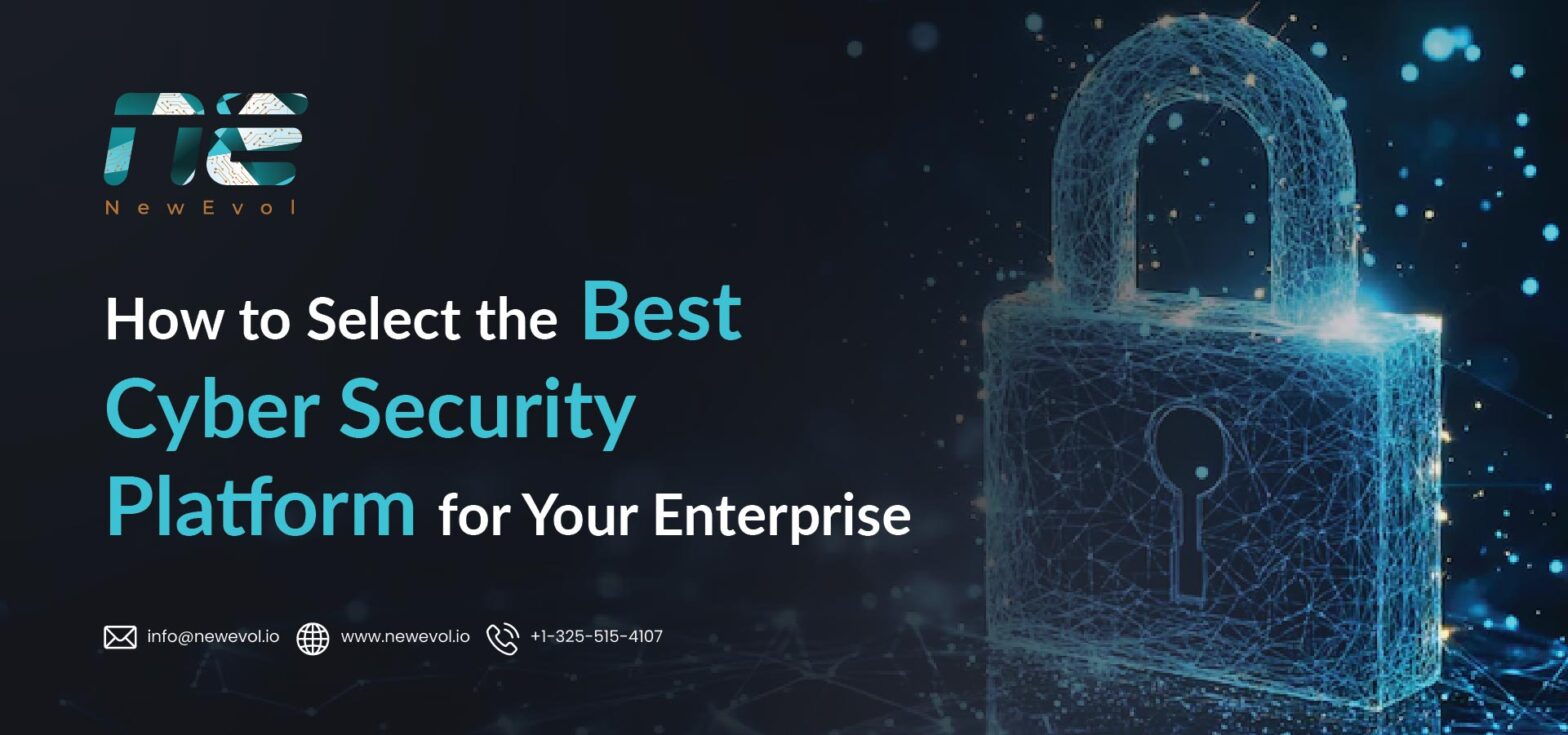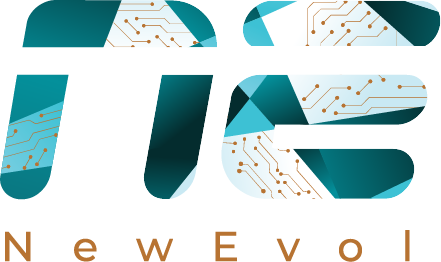How to Select the Best Cyber Security Platform for Your Enterprise

For U.S. enterprises, choosing the right cybersecurity platform has never been more critical. With cyberattacks costing American businesses over USD 10 million on average per breach and regulations tightening across industries, the platform you select directly impacts your organization’s resilience, compliance, and bottom line. Today’s threat landscape is complex—ransomware, insider threats, and advanced phishing campaigns don’t just target IT systems, they disrupt business operations, customer trust, and even national supply chains.
Yet with so many options—SIEM, SOAR, XDR, MDR, cloud-native security solutions—the challenge lies not in finding a tool, but in choosing the right platform that aligns with your enterprise’s risks, resources, and growth goals.
This blog explores how to evaluate and select the best cybersecurity platform for your enterprise, with practical insights on features, compliance, and operational fit—plus how NewEvol can help U.S. businesses build smarter, more adaptive defenses.
Defining the Cybersecurity Platform Landscape
When we talk about a “cybersecurity platform,” it’s not just another tool in the stack—it’s the foundation that unifies detection, response, and protection across your enterprise. Unlike point solutions that solve one problem at a time, platforms bring together multiple layers of security into a single, integrated ecosystem.
Some of the most common categories include:
- SIEM (Security Information and Event Management): Centralizes logs and security data for analysis, compliance, and investigation.
- SOAR (Security Orchestration, Automation, and Response): Automates response workflows and integrates different security tools for faster action.
- XDR (Extended Detection and Response): Provides cross-layer visibility (endpoints, network, cloud, identity) with AI-driven detection and response.
- EDR (Endpoint Detection and Response): Focused on detecting and mitigating endpoint threats like ransomware or malware.
- MDR (Managed Detection and Response): Outsourced monitoring and response for enterprises without a 24/7 SOC.
- Cloud Security Platforms (CASB, CNAPP, CWPP): Address visibility, control, and protection for SaaS, cloud workloads, and multi-cloud environments.
For large U.S. enterprises, the challenge is deciding whether to consolidate into one integrated platform or adopt a best-of-breed mix. A consolidated platform simplifies management, while a mixed approach may provide deeper specialization—but often at the cost of complexity.
Start with business goals and risk profile
Before evaluating vendors or features, enterprises must align platform selection with their business objectives and risk tolerance. Cybersecurity isn’t just about defending IT—it’s about enabling secure growth, protecting critical assets, and meeting regulatory requirements.
Key considerations include:
- Business Priorities: Are you focused on protecting customer data, securing critical infrastructure, ensuring uptime, or enabling cloud expansion? A healthcare provider may prioritize HIPAA compliance, while a financial services firm must meet strict PCI-DSS and SOX requirements.
- Crown-Jewel Assets: Identify the systems, data, and processes that would cause the greatest harm if compromised—intellectual property, payment systems, supply chain integrations, or customer databases.
- Risk Appetite: Some enterprises adopt a zero-trust approach with tight controls, while others may accept certain risks for speed and agility.
- Regulatory Pressures: U.S. enterprises face increasing scrutiny from federal and state bodies, including SEC cybersecurity disclosure rules, NIST standards, and sector-specific mandates (HIPAA, CMMC for defense contractors).
Assess security operations maturity
Choosing the right cybersecurity platform depends heavily on your organization’s security operations maturity—the level at which your team can effectively monitor, detect, and respond to threats. Not all enterprises are ready for the same platform capabilities, and misalignment can lead to underutilized tools or security gaps.
Key maturity considerations include:
1. SOC Capability
- Does your enterprise operate a 24/7 Security Operations Center (SOC), or rely on ad-hoc monitoring?
- Mature SOCs can leverage SIEM, SOAR, and XDR fully, while less mature teams may benefit more from MDR or managed services.
2. Process Standardization
- Are incident response workflows documented and consistently followed?
- Mature processes allow automation and orchestration to be highly effective, reducing response times.
3. Staffing and Expertise
- Do you have trained analysts for threat hunting, log analysis, and forensic investigation?
- Organizations with limited cybersecurity talent often need platforms that provide built-in AI-driven detection and managed support.
4. Technology Integration
- Mature organizations have multiple tools integrated (cloud, endpoints, network, identity) and can benefit from XDR or SOAR.
- Less mature teams may need a single-platform approach to simplify visibility and minimize operational overhead.
Technical must-haves checklist
When evaluating cybersecurity platforms for U.S. enterprises, certain technical capabilities are essential to ensure comprehensive protection, scalability, and operational efficiency:
1. Telemetry Coverage
- Collects logs and events across endpoints, cloud workloads, networks, applications, and identity systems.
- Ensures full visibility into all potential attack vectors.
2. Scalability & Multi-Cloud Support
- Handles growth in users, devices, and data volumes.
- Supports hybrid and multi-cloud environments (AWS, Azure, GCP) seamlessly.
3. Integrations & Open APIs
- Connects with existing security tools, ITSM platforms, and analytics systems.
- Enables automation through SOAR playbooks and workflow orchestration.
4. Data Retention & Analytics Performance
- Stores historical logs for compliance and forensic investigation.
- Supports fast, large-scale search and advanced analytics without performance bottlenecks.
5. Threat Detection Capabilities
- Machine learning and behavioral analytics for anomaly detection.
- Threat intelligence integration for proactive identification of emerging threats.
6. Automated Response & Orchestration
- Executes predefined response playbooks automatically.
- Reduces mean time to respond (MTTR) and mitigates human error.
7. User & Entity Behavior Analytics (UEBA)
- Detects insider threats and compromised accounts based on behavioral patterns.
8. Compliance & Reporting Features
- Generates audit-ready reports to meet HIPAA, PCI-DSS, SOX, and other regulatory requirements.
Security features that matter
Selecting the right cybersecurity platform means looking beyond the label—it’s about features that directly improve detection, response, and visibility. For U.S. enterprises, the most critical capabilities include:
1. Advanced Threat Detection
- Machine learning, behavioral analytics, and anomaly detection to identify both known and unknown threats.
- Integration with threat intelligence feeds for proactive defense.
2. Automated Incident Response
- SOAR capabilities that execute predefined playbooks automatically.
- Containment, quarantine, or remediation actions triggered without manual intervention to reduce response time.
3. Cross-Layer Visibility
- XDR or integrated SIEM platforms correlate events across endpoints, network, cloud, and identity layers.
- Provides a holistic view of attacks, reducing blind spots.
4. Forensics and Investigation
- Detailed logs, timelines, and root-cause analysis for post-incident investigation.
- Supports compliance audits and strengthens future prevention strategies.
5. Alert Accuracy & Noise Reduction
- AI-driven prioritization to reduce false positives and ensure security teams focus on high-risk threats.
6. User and Entity Behavior Analytics (UEBA)
- Detects insider threats and compromised accounts by analyzing abnormal behaviors.
Operational considerations & TCO
Selecting a cybersecurity platform isn’t just about features—it’s also about how it fits operationally and financially. U.S. enterprises should evaluate the following:
1. Licensing Models
- Understand pricing structures: per-endpoint, per-node, data ingestion, or user-based licenses.
- Watch for hidden costs, including storage, retention, and premium integrations.
2. Staffing & Training Requirements
- Assess internal expertise required to manage the platform effectively.
- Consider whether your team needs additional training, or if managed services (MDR/SOC-as-a-service) would be more cost-effective.
3. Maintenance & Upgrades
- Check for ongoing support, patching, and version updates.
- Platforms with automated updates reduce operational overhead and minimize security gaps.
4. Managed vs. In-House Operation
- Decide whether to handle monitoring and response internally or leverage a managed service provider.
- MDR or SOAR-as-a-service can be ideal for enterprises lacking 24/7 SOC capabilities.
5. Total Cost of Ownership (TCO)
- Include licensing, infrastructure, staff, training, and ongoing support in the calculation.
- Factor in efficiency gains from automation and reduced incident response times—these often offset higher initial costs.
Compliance, governance & legal
For U.S. enterprises, cybersecurity platforms must support regulatory compliance and governance requirements, ensuring both legal protection and operational integrity. Key considerations include:
1. Audit Trails and Reporting
- Platforms should generate detailed, audit-ready logs of all security events and actions.
- Enables compliance with federal and state regulations, such as HIPAA, PCI-DSS, SOX, and NIST frameworks.
2. Data Privacy & Residency
- Ensure sensitive data is stored and processed according to U.S. privacy regulations.
- Platforms should allow for encryption, access controls, and secure data handling policies.
3. Policy Enforcement & Governance
- Ability to define, enforce, and monitor organizational security policies.
- Supports consistent security operations across departments and business units.
4. Legal & Contractual Considerations
- Review vendor contracts for SLAs, liability, data ownership, and breach notification obligations.
- Ensure the platform’s capabilities align with internal and external legal requirements.
Vendor evaluation framework (practical checklist)
Evaluating cybersecurity platform vendors requires a structured approach to ensure you select a solution that aligns with your enterprise’s needs. Key steps include:
1. Define Evaluation Criteria
- Coverage: endpoints, network, cloud, identity, and applications.
- Detection capabilities: AI/ML, anomaly detection, threat intelligence integration.
- Response automation: SOAR capabilities and playbooks.
2. Proof-of-Concept (POC) Testing
- Run a POC in a controlled environment to test real-world performance.
- Measure detection accuracy, false-positive rates, and response times.
3. Integration & Compatibility
- Confirm compatibility with existing tools, ITSM systems, and cloud platforms.
- Check APIs and automation support for seamless orchestration.
4. Service Level Agreements (SLAs) & Support
- Evaluate uptime guarantees, response times, and escalation procedures.
- Assess availability of vendor support and managed services options.
5. Reference Checks & Third-Party Validation
- Speak with existing clients to validate vendor claims.
- Review independent analyst reports, certifications, and compliance attestations.
6. Total Cost & ROI Assessment
- Consider licensing, integration, training, and ongoing maintenance costs.
- Factor in efficiency gains from automation, reduced breach impact, and resource optimization.
7. Security Roadmap & Innovation
- Assess vendor commitment to continuous updates, AI/ML advancements, and evolving threat protection.
Integration & deployment strategy
A successful cybersecurity platform is only as effective as its deployment and integration within your enterprise ecosystem. A clear strategy ensures seamless adoption, minimal disruption, and maximum ROI:
1. Phased Rollout
- Start with a pilot program in a controlled environment to validate configurations and workflows.
- Gradually expand deployment across departments and business units, incorporating lessons learned.
2. Coexistence with Legacy Systems
- Ensure the platform can integrate with existing security tools without causing conflicts or operational gaps.
- Maintain interoperability with legacy monitoring, logging, and endpoint systems during migration.
3. Customization & Tuning
- Tailor detection rules, playbooks, and dashboards to match your enterprise’s specific risk profile and operational processes.
- Continuously optimize based on real-world alerts and incidents.
4. Training & Change Management
- Provide training for IT and security teams on platform use, incident handling, and workflow automation.
- Promote collaboration between security, IT, and business units to maximize platform effectiveness.
5. Continuous Monitoring & Feedback Loop
- Establish ongoing monitoring to measure performance, detect gaps, and improve workflows.
- Use metrics from the pilot and early rollout to refine detection rules, automated responses, and reporting.
Measure success — KPIs that matter
Once a cybersecurity platform is deployed, measuring its effectiveness is crucial to ensure it delivers tangible security and business value. Key performance indicators (KPIs) for U.S. enterprises include:
1. Mean Time to Detect (MTTD)
- Measures how quickly the platform identifies threats.
- Lower MTTD indicates faster detection and reduced exposure.
2. Mean Time to Respond (MTTR)
- Tracks the time taken to contain and remediate threats.
- A shorter MTTR reflects efficient incident response and automation effectiveness.
3. False Positives / Alert Accuracy
- Monitors the quality of alerts generated by the platform.
- High accuracy reduces analyst fatigue and focuses resources on real threats.
4. Incidents Prevented / Contained
- Evaluates the number of threats stopped before causing damage.
- Demonstrates proactive protection and ROI on the platform.
5. Operational Efficiency Gains
- Time saved through automated workflows, orchestration, and reporting.
- Frees security teams to focus on strategic initiatives rather than manual triage.
6. Business Impact Metrics
- Reduction in downtime, prevented data breaches, compliance audit success rates, and financial impact mitigated.
Common pitfalls and how to avoid them
Selecting and deploying a cybersecurity platform comes with potential challenges. U.S. enterprises can avoid costly mistakes by being aware of common pitfalls:
1. Choosing Features Over Fit
- Mistake: Selecting a platform based on a long feature list rather than alignment with business needs and risk profile.
- Solution: Prioritize platforms that match your enterprise’s maturity, compliance requirements, and operational goals.
2. Ignoring Total Cost of Ownership (TCO)
- Mistake: Focusing only on licensing fees while overlooking integration, training, and ongoing maintenance costs.
- Solution: Conduct a comprehensive TCO analysis, factoring in operational savings from automation.
3. Over-Reliance on Alerts
- Mistake: Treating every alert as critical without prioritization, leading to alert fatigue.
- Solution: Use AI-driven prioritization and automated workflows to reduce noise and focus on high-risk threats.
4. Skipping Training and Change Management
- Mistake: Deploying a platform without training staff or integrating workflows, leading to underutilization.
- Solution: Implement structured training, documentation, and cross-departmental collaboration.
5. Neglecting Vendor Support and Roadmap
- Mistake: Failing to assess vendor responsiveness, updates, and future development plans.
- Solution: Evaluate SLAs, customer support quality, and vendor innovation roadmap before selection.
How NewEvol helps
NewEvol empowers U.S. enterprises to strengthen cybersecurity operations with AI-driven detection, automation, and actionable insights. By integrating seamlessly with existing infrastructure, NewEvol enhances visibility, response, and compliance across networks, endpoints, and cloud environments.
Key advantages include:
1. Real-Time Threat Detection
AI and machine learning continuously monitor systems for anomalies, suspicious behavior, and emerging threats.
2. Automated Response & Orchestration
SOAR capabilities allow automated containment and remediation, reducing mean time to respond (MTTR) and operational overhead.
3. Unified Visibility & Analytics
Correlates data from endpoints, cloud, network, and identity layers to provide a complete security picture.
4. Compliance Support
Generates audit-ready reports aligned with HIPAA, PCI-DSS, SOX, and other U.S. regulatory frameworks.
5. Flexible Deployment Options
Supports in-house SOCs, hybrid environments, or fully managed MDR solutions for organizations with limited resources.
Conclusion
Selecting the right cybersecurity platform is a strategic decision that directly impacts an enterprise’s resilience, compliance, and operational efficiency. By aligning platform choice with business goals, risk profile, security operations maturity, and technical requirements, U.S. organizations can build a strong foundation against evolving cyber threats.
Platforms like NewEvol offer AI-driven threat detection, automated response, and unified visibility, helping enterprises transform cybersecurity from reactive defense to proactive resilience. By following a structured evaluation and deployment approach, organizations can protect critical assets, meet regulatory obligations, and confidently embrace digital growth.
FAQs
Which platform is best for cybersecurity?
The best platform depends on your enterprise’s needs, risk profile, and SOC maturity. Integrated solutions like SIEM, XDR, and SOAR are ideal for comprehensive protection.
What is the best cybersecurity company in the U.S.?
Leading U.S. cybersecurity companies include Palo Alto Networks, CrowdStrike, Splunk, and NewEvol, which offer advanced threat detection, response, and managed services.
Which cybersecurity course is best in the USA?
Top courses include CISSP, CISM, CompTIA Security+, and specialized programs offered by SANS Institute and leading universities, depending on your career focus.
What cybersecurity framework is used in the U.S.?
The NIST Cybersecurity Framework (CSF) is widely adopted across industries for risk management, governance, and regulatory compliance.

